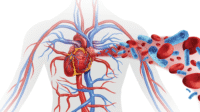Introduction
THE RISING PREVALENCE in electronic cigarette (e-cigarette) usage among college students is an emerging public health issue, marking a shift from traditional tobacco products to e-cigarettes (Fonseca Fuentes et al., 2019). This trend is particularly concerning due to the health risks associated with e-cigarettes, such as nicotine addiction, interstitial lung disease and acute respiratory distress syndrome (England et al., 2017). In response to this challenge, the Ask, Advise, and Refer (AAR) tobacco cessation model was implemented in a university health center, aiming to promote cessation.
Literature Review
A comprehensive literature review highlights several areas of concern. The growing acceptance of e-cigarettes among youth, as compared to traditional cigarettes, is alarming (Sommerfeld et al., 2018). Unlike traditional tobacco, e-cigarettes are often perceived as less harmful, contributing to their popularity among young adults. Furthermore, e-cigarettes pose distinct health risks, including the potential for nicotine addiction and lung damage (Fathi, 2020). The literature also suggests that e-cigarette use leads to traditional cigarette smoking, a phenomenon supported by multiple studies (Hajek et al., 2019; Soneji et al., 2017). This transition from e-cigarettes to traditional smoking amplifies the overall health risks. A particularly concerning aspect is the rise in e-cigarette or vaping associated lung injury (EVALI), emphasizing the immediate health dangers of vaping (Chaumont et al., 2019; Jatlaoui et al., 2019).
Background of the Problem
E-cigarettes are readily available, with many products sold online. Their attractive flavors, such as cotton candy and pineapple sherbet, appeal to younger age groups. King et al. (2020) reports that factors like advertising, attractive flavors, ease of availability, and concealability contribute to the popularity of e-cigarettes among youth. The National College Health Assessment (2021) reports that 31% of college-aged individuals have used tobacco or a nicotine delivery system. Moreover, Barrington-Trimis et al. (2016) found that young adults who vape are six times more likely to initiate traditional cigarette smoking compared to those who have never used an e-cigarette.
Asking college age individuals about tobacco use, including e-cigarettes, is essential in identifying all users. In the college-age individual this can be difficult as they may not self-identify as a smoker. Angelini et al. (2017) reports many college students smoke socially as in only on weekends, or when drinking with a group, and they do not answer in the affirmative to traditional tobacco screening questions because they do not believe themselves to be a true smoker.
Methods
The AAR model, adapted from the 5As tobacco cessation framework, was implemented over six weeks at a university health center. The intervention involved systematically asking all patients about their tobacco use by utilizing the CDC’s (2020) brief tobacco screener. All patients were asked: “Do you currently smoke or use other forms of tobacco, e-cigarettes, mods, or vaping devices like Juul, Vuse or Puff Bar?” This was documented in the vital signs section of the intake in the electronic health record for tracking purposes. Next those who indicated tobacco use were advised on the health risks associated with it and referred to quitlines for cessation support. Data collected from August 15 to September 30, 2022 (intervention period), were compared with data from the same period in 2021 (pre-intervention) to assess the impact of the intervention.
Results
Before the intervention, only 67.2% of 351 patients were questioned about their tobacco use and there were no referrals for cessation support. In contrast, after the intervention, every patient (100% of 313) underwent screening for tobacco use, with 11.2% identified as tobacco users. Of these 85.7% were found to be using e-cigarettes. To assess the change in screening rates for tobacco/e-cigarette use before and after the intervention, a Chi-Square test of proportions was conducted. This test showed a significant increase in screening rates, indicated by a Chi-Square value of X2 (1) = 124.03 and a p-value below .001. Among the identified tobacco users, 72% accepted referrals to quitlines, a considerable increase.
Discussion
The implementation of the AAR model in a university health setting proved effective. Most tobacco users identified were e-cigarette users, which aligns with current trends observed in the literature (King et al., 2020). The success of the model in increasing quitline referrals demonstrates its potential as a vital tool in public health efforts targeting college students. However, the study had limitations, such as its brief duration and the potential for underreporting of tobacco use.
Further Considerations and Future Directions
The implications of this study extend beyond immediate cessation efforts, highlighting the need for strategies that include prevention, education, and policy changes. Preventive measures in educational settings, starting from early school years, could help reduce the initiation of e-cigarette use. Educational campaigns focusing on risks and long-term consequences of e-cigarette use, tailored to the understanding and interests of younger audiences, are crucial. Policy changes, like stricter regulations on e-cigarette sales and marketing, particularly those targeting the youth demographic, could play a significant role. The attractiveness of e-cigarettes calls for regulatory evaluation (King et al., 2020). Exploring the psychological and social factors influencing e-cigarette use among college students can aid in developing more targeted and effective cessation and prevention strategies. Incorporating feedback from students and providers involved in the AAR model implementation can provide insights for refining the approach. Continuous monitoring and evaluation of cessation programs will ensure their effectiveness in the evolving public health landscape.
By extending the scope of tobacco cessation efforts to include comprehensive preventive measures, educational initiatives, policy changes, and a deeper understanding of the factors influencing tobacco use, nurse practitioners can more effectively combat the rising tide of e-cigarette use among college students.
Conclusion
The implementation of the AAR model in a university health center was effective in identifying tobacco users, especially e-cigarette users, and facilitating their referral to cessation programs. This approach supports public health goals to reduce tobacco use among college students and can serve as a model for similar settings. The AAR model is a feasible and effective approach to tobacco cessation in university health settings, and its success suggests potential for broader application in reducing tobacco use among college students.
References
American Association of Colleges of Nursing. (2006). The essentials of doctoral education for advanced nursing practice. Retrieved from https://www.aacnnursing.org/DNP/DNPEssentials
Angelini, K., Sutherland, M. A., & Fantasia, H. C. (2017). Reported alcohol and tobacco use and screening among college women. Journal of Obstetric, Gynecologic, & Neonatal Nursing, 46, e75-e82.
Barrington-Trimis, J. L., Urman, R., Berhane, K., Unger, J. B., Cruz, T. B., Pentz, M. A., Samet, J. M., Leventhal, A. M., & McConnell, R. (2016). E-cigarettes and future cigarette use. Pediatrics, 138(1), e201600379. doi:10.1542/peds.2016-0379
Blount, B. C., Karwowski, M. P., Shields, P. G., Morel-Espinosa, Valentin-Blasini, L., Gardner, M., . . . Pirkle, J. L. (2020). Vitamin e acetate in bronchoalve-olar-lavage fluid associated with EVALI. The New England Journal of Medicine, 382(8), 697-705. doi: 10.1056/NEJMoa1916433
Brown, J. (2013). A review of the evidence on technology-based interventions for the treatment of tobacco dependence in college health. Worldviews Evi-dence-Based Nursing, 10(3), 150-162. doi: 10.111/wvn.12000
Cai, L., Xu, F., Cheng, Q., Zhan, J., Xie, T., Ye, Y., Xiong, S., McCarthy, K., & He, Q. (2017). Social smoking an dmental health among Chinese male col-lege students. American Journal of Health Promotion, 31(3), 226-231. doi:10.4278/ajhp.141001-QUAN-494
Centers for Disease Control and Prevention. (2020, April 28). Smoking and tobacco use: Health effects. Retrieved from https://www.cdc.gov/tobacco/basic_information/health_effects/index.htm
Chaumont, M., van de Borne, P., Bernard, A., Van Muylem, A. Deprez, G., Ullmo, J., Starczewska, E., Briki, R., he Hemptinne, Q., Zaher, W., & Debbas, N. (2019). Fouth generation e-cigarette vaping induces transient lung inflammation and gas exchange disturbances: results from two randomized clinical trials. American Journal of Physiology Lung Cellular and Molecular Physiology, 316(5), L705-L719. doi:10.1152/ajplung.00492.2018.
Ellington, S., Salvatore, P. P., Ko, J., Danielson, M., Kim, L., Cyrus, A., Wallace, M., Board, A., Krishnasamy, V., King, B. A., Rose, D., Jones, C. M., Pollack, L. A., & Ko, J. (2020). Update: product, substance-use, and demographic characteristics of hospitalized patients in a nationwide outbreak of e-cigarette, or vaping, product use-associated lung injury-United States, August 2019-January 2020. Morbidity and Mortality Weekly Report, 69(2), 44-49. doi:10.15585/mmwr.mm6902e2
England, L. J., Aagaard, K., Bloch, M., Conway, K., Cosgrove, K., Grana, R., Gould, T. J., Hatsukami, D., Jensen, F., Kandel, D., Lanphear, B., Leslie, F., Pauly, J. R., Neiderhiser, J., Rubinstein, M., Slotkin, T. A., Spindel, E., Stroud, L., & Wakschlag, L. (2017). Developmental toxicity of nicotine: A trans-displinary systhesis and implications for emerging tobacco products. Neuroscience & Behavioral Reviews, 72, 179-186. doi:10.1016/j.neubiorev.2016.11.013
Fathi, J. T., (2020). Tobacco use: The current state of affairs and how nurses can help patients quit. The Online Journal of Issue in Nursing, 25(3), manu-script 1. Retrieved from doi:10.3912/OJIN.Vol25No03Man01
Fonseca Fuentes, X., Kashyap, R., Hays, J. T., Chalmers, S., Lama von Buchwald, C., Gajic, O., & Gallo de Moraes, A. (2019). VpALI-vaping-related acute lung injury: A new killer around the block. Mayo Clinic Proceedings, 94(12), 2534-2545. doi:10.1016/j.mayocp.2019.10.010
Hajek, P., Phillips-Waller, A., Przulj, D., Pesola, F., Smith, K. M., Bisal, N., Li, J., Phil, M., Parrott, S., Sasieni, P., Dawkins, L., Ross, L., Goniewicz, M., Wu, Q., Sc, M., & McRobbie, H. J. (2019). A randomized trial of e-cigarettes versus nicotine-replacement therapy. New England Journal of Medicine, 380, 629-637. doi:10.1056/NEJMoal808779
Henry, T. S., Kanne, J. P., & Kligerman, S. J. (2019). Imaging of vaping-associated lung disease. New England Journal of Medicine, 381(15), 1486-1487. doi:10.1056/NEJMc1911995
Institute for Healthcare Improvement. (2017). Plan-do-study-act (PDSA) worksheet. Retrieved from https://www.ihi.org/resources/Pages/Tools/PlanDoStudyActWorksheet.aspx
Jatlaoui, T. C., Wiltz, J. L., Sara, K., Siegel, D. A., Koppaka, R., Montandon, M.,…Evans, M. E. (2019). Update: Interim guidance for health care providers for managing patients with suspected e-cigarette, or vaping, product use-associated lung injury-United States, 2019. Morbidity and Mortality Weekly Report (MMWR), 68(46), 1081-1086.
Jenssen, B. P. & Walley, S. C. (2019). E-cigarettes and similar devices. American Academy of Pediatrics, 143(2), 1-8.
Kansas Tobacco Quitline. (n.d.). Kansas tobacco quitline. Retrieved April 14, 2022. https://communitycareks.org/wp-content/uploads/2013/08/Quitline_Fact_Sheet.pdf
Khandaker, S. & Rana, J. (2016). Effectiveness of antismoking campaigns using health shock appeals among male university students in western Austrailia. Family Medicine & Primary Care Review, 18(3), 253-261. doi:10.5114/fmpcr/64797
King, B. A., Jones, C. M., Baldwin, G. T. & Briss, P. A. (2020). The EVALI and youth vaping epidemics-implications for public health. The New England Journal of Medicine, 382(8), 689-691. doi:10.1056/NEJMp1916171
Klein, M. D., Sokol, N. A., & Stroud, L. R. (2019). Electronic cigarettes: common questions and answers. American Family Physician, 100(4), 227-235.
Lichtenstein, E., Zhu, S., & Tedschi, G. J. (2010). Smoking cessation quitlines: An underrecognized intervention success story. American Psychological Association, 65(4), 252-261. doi:10.1037/a0018598
Missouri Tobacco Quitline. (2012). Retrieved February 15, 2022 https://health.mo.gov/living/wellness/tobacco/smokingandtobacco/pdf/QuitlineFactSheet2.pdf
National College Health Assessment. (2021). American College Health Association. Retrieved from https://www.acha.org/documents/ncha/NCHA-III_FALL_2021_REFERENCE_GROUP_EXECUTIVE_SUMMARY.pdf
Pearson, J. L., Reed, D. M., & Villanti, A. C. (2020). Vapes, e-cigs, and mods: What do young adults call e-cigarettes? Nicotine & Tobacco Research, 22(5), 848-852. doi:10.1093/ntr/nty223
Perrine, C. G., Pickens, C. M., Boehmer, T. K., King, B. A., Jones, C. M., DeSisto, C. L., Duca, L. M., Lekiachvili, A., Kenemer, B., Shamout, M., Landen, M. G., Lynfield, R., Ghinai, I., Heinzerling, A., Lewis, N., Pray, I. W., Tanz, L. J., Patel, A., & Briss, P. A. (2019). Characteristics of a multistage outbreak of lung injury associated with e-cigarette use, or vaping-United States, 2019. Morbidity and Mortality Weekly Report , 68(39), 860-864.
Philbrick, A. M., Farris, K. B., Faber, A. J., Anderson, E. A., Carmody, B. R., Mascardo, L. A., Jacobsen, R. B., Reist, J. C., Newkirk, E. N., & McDaniel, D. L. (2009). Ask-advise-refer increases referrals to a smoking cessation group clinic. Journal of Pharmacy Technology, 25, 230-234. Retrieved from https://journals-sagepub-com.proxy.wichita.edu/doi/pdf/10.1177/875512250902500403
Rayman, L. & Kessler, T. A. (2021). E-cigarettes in college-age students: Roles of the nurse practitioner. The Journal for Nurse Practitioners, 17, 1237-1242. doi:10.1016/j.nurpra.2021.08.007
Schroeder, S. A. (2005). What to do with a patient that smokes. Journal of the American Medical Association, 294(4), 482-501. doi:10.1001/jama.294.4.482
Simerson, D. & Hackbarth, D. (2018). Emergency nurse implementation of the brief smoking-cessation intervention: Ask, advise, and refer. Journal of Emergency Medicine, 44(3), 242-248. doi: 10.1016/j.jen.2017.08.004
Sommerfeld, C. G., Weiner, D. J., Norwalk, A., & Larkin, A. (2018). Hypersensitivity pneumonitis and acute respiratory distress syndrome from e-cigarette use. Pediatrics, 141(6), 1-4. doi:10.1542/peds.2016-3297
Soneji, S., Barrington-Trimis, J. L., Wilis, T. A., Leventhal, A. M., Unger, J. B., Gibson, L. A., Yang, J., Primack, B. A., Andrews, J. A., Miech, R. A., Spindle, T. R., Dick, D. M., Eissenberg, T., Hornik, R. C., Dang, R., & Sargent, J. D. (2017). Association between initial use of e-cigarettes and subsequent cigarette smoking among adolscents and youn adults: A systematic review and meta-analysis. Journal of American Medical Association Pediatrics, 171(8), 788-797. doi: 10.1001/jamajpediatrics.2017.1488
Stead, L. F., Perera, R., & Lancaster, T. (2007). A systematic review of interventions for smokers who contact quitlines. Tobacco Control, 16(1), i3-i8. doi:10.1136/tc.2006.019737
Substance Abuse and Mental Health Services Administration. (2020). Evidence-based resource guide series: Reducing vaping among youth and young adults. Retrieved from https://store.samhsa.gov/sites/default/files/SAMHSA_Digital_Download/PEP20-06-01-003_508_0.pdf
US Preventative Services Task Force Recommendation Statement. (2021). Interventions for tobacco smoking cessation in adults, including pregnant per-sons. Journal of the American Medical Association, 325(3), 265-279. Retrieved from doi:10.1001/jama.2020.25019
Zaccagnini, M. E. & White, K. W. (2017). The doctor of nursing practice essentials a new model for advanced practice nursing (3rd ed.). Jones & Bartlett Learning.
Zhu, S., Anderson, C. M., Tedeschi, G. J., Rosbrook, B., Johnson, C. E., Byrd, M., & Gutierrez-Terrell, E. (2002). Evidence of real-world effectiveness of a telephone quitline for smokers. New England Journal of Medicine, 347(14), 1087-1093.


























